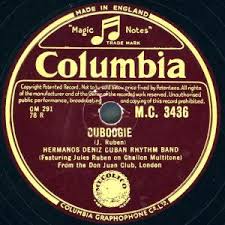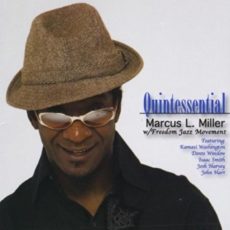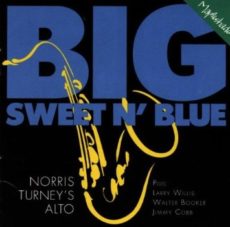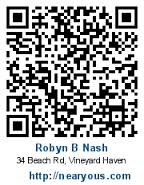
Daily Dose Of Jazz…
Joe Deniz was born José William Deniz on September 10, 1913 in Butetown, Cardiff, Wales to a Black American mother and a Cape Verdean father. He learned the ukulele first, before upgrading to the fuller fretboard and along with his two brothers they all made their mark on the UK jazz dance scene. He started playing on the docks in Butetown, now known as Tiger Bay, where he played impromptu calypsos for the sailors for small change. As his skill increased so he would join other vagrant musicians traveling through the ethnic centers of Cardiff, playing engagements at houses in exchange for drinks. Eventually a nucleus of black musicians came together with Victor Parker, George Glossop and Don Johnson, finding work in Soho clubs.
After a brief sojourn to his home town, Deniz returned as drummer at the Nest, an after hours London club visited by Afro-Caribbean musicians and where he met Fats Waller and his idol, Django Reinhardt. He went on to join Ken ‘Snakehips’ Johnson’s Black Orchestra as his guitarist, remaining until 1941 when Johnson was killed in a Café De Paris bombing. He was injured at the time and had lifelong discomfort in his leg from shrapnel. He found session work with many top-flight band leaders, as well as violinist Stéphane Grappelli. His personal fame also rose via solos with Harry Parry’s Radio Rhythm Club Sextet.
Turning away from jazz, he joined his brothers in the Latin-styled Hermanos Deniz, before joining the West End run of Ipi Tombi, a South African musical which featured his duets with his brother Frank. He retired from music in 1980, contenting himself with his memories, passion for DIY and running a successful business. Guitarist and drummer Joe Deniz, never recorded as a leader but as a member of the Hermanos Deniz group, passed away April 24, 1994.
Sponsored By
![]()

Daily Dose Of Jazz…
Marcus Lamar Miller was born on September 9, 1970 in Chesapeake, Virginia and began his musical journey at the age of three playing drums in his mothers church. During his elementary school years, 3rd-5th grade, he studied classical harp with the principal harpist for the Norfolk Symphony. Between the years 1983-88 he recorded on three albums with several mass choirs of the United Holy Church of America Inc. His high school and college years were spent backing rock, reggae, funk, Appalachian folk and jazz bands.
He went onto attend Washington & Lee University studying four-years of African, European, and Latin American histories. Setting his sights west to continue studies in music, Marcus landed in Berkeley, California in 1993 and began working with numerous local bands in the San Francisco bay area.
Miller landed a CNN spotlight of up and coming jazz musicians before touring and performing 1995 and 1996 with Ben Harper throughout Europe, Japan, and North America. He then moved to Anaheim after the tour, began a stint with Disney, started studying African traditional drumming with percussionists Leon Mobley and Angel Figueroa, and was a founding member of Leon Mobley & Da Lion.
Marcus has since gone on to perform with such artists as Ashanti, Sheila E, Andre Cymone, Barbara McNair, the Watts Prophets, Bennie Maupin, Vinx, Jimmy Sommers,Tony Furtado, and Ozomatli. He has collaborated with such choreographer/dancers as Lula Washington, Cleo Parker Robinson, Winifred Harris, Bonnie Homesy, Toni Pierce, Marguerite Donlon, and wife Tamica Washington-Miller.
Educating children is one of his biggest passions and teaches regularly at the New Roads School and holds private lessons. He founded YDLA, a performance group called the Young Drummers of Los Angeles, and works with various organizations throughout California facilitating drum workshops for the youth. His Freedom Jazz Movement serves as his main vehicle of musical expression, fusing traditional African rhythms with a East Coast swing. Drummer, composer, bandleader and educator Marcus L. Miller continues to perform, record and educate.
![]()
More Posts: drums

Daily Dose Of Jazz…
Norris Turney was born on September 8, 1921 in Wilmington, Ohio. He began his career in the Midwest, playing in territory bands such as the Jeter-Pillars Orchestra. He played with Tiny Bradshaw in Chicago, Illinois before moving to New York City, where he played with the Billy Eckstine Orchestra from 1945 to 1946.
Turney had little luck in New York and returned to Ohio to play in local ensembles through the 1950s. He toured with Ray Charles in 1967, then was hired by Duke Ellington, staying from 1969 to 1973. He was hired to play alto saxophone as an “insurance policy” due to the failing health of Johnny Hodges. He also played tenor saxophone and was the first flute soloist to ever play in Ellington’s orchestra.
Following his tenure with Ellington, he joined the Savoy Sultans, the Newport All-Stars and played in several pit orchestras. By the 1980s, he toured and recorded as a member of the Oliver Jackson Quintet, with Ali Jackson, Irvin Stokes, and Claude Black.
He recorded as a leader between 1975 and 1978, with I Let A Song with Booty Wood, Aaron Bell, Sam Woodyard and Raymond Fol. He released Big, Sweet ‘n Blue in 1993 with Larry Willis, Walter Booker and Jimmy Cobb. As a sideman he recorded with Randy Weston, Oliver Jackson and Red Richards. Flautist and saxophonist Norris Turney passed away of kidney failure on January 17, 2001, Kettering, Ohio.
![]()

Review: Morgan Guerin | The Saga
There is a reason for cover art. It speaks in silence for the artist. Thus, the listener should take a moment to immerse him/herself to visually understand the message the artist is attempting to convey. What I found in the artwork was a mini story of the instrumental journey from boyhood to arrive with a full arsenal by manhood. I realized I was viewing the preface of what was to come. Aptly titled The Saga, I knew a journey had taken place to get to this point as I inserted the disc into my computer. What I heard was an unexpected voice of a young man who had traveled far beyond his musical prowess. I was immediately reminded of Herman Hesse and Siddhartha’s sojourn, who left home to discover life through the lens of the world, only to return with greater self-awareness and peace.
To say he is compelling storyteller falls short of the message his music delivers. He is a messenger, come from a long line of griots who has given voice to a generation that unwillingly is forced to take the baton as have generations before him. From deep in the Louisiana culture you will hear the Second Line and rhythm and blues influences in his music. The very first drumbeat of Parallel sets the tone for his acknowledgement of the turbulent ecological and racial times the country is in. I am hearing the protest songs of the Sixties expressed in a rap delivered by Dashill Smith.
Blueprint delivers another message and eases us into a zone where discomfort is our journey foretelling, through the voice of Allana Hudson, the lies to humanity that contradict our ancestor’s wisdom. A fusion of sound that is ethereal beckons us forward in Tabula Rava, reminiscent of Mahavishnu, Santana, Zawinul and Return to Forever. Beginning with an Eastern calling and announcement of something majestic approaching, it builds to a cacophonous revelry in the spirit. It’s like witnessing something for the very first time that takes your breathe away or gives you pause. That tingly feeling of excitement that leaves you fulfilled for that brief moment in time. In The Saga is the journey of ups and downs, loves and loss, in the varied experiences that greet us along the way.
In Madeira there is settledness I hear when one finds a space that is easy and comfortable. This is where find solace With A Peace Of Mind that remains constant throughout our lives if we only allow it. Sharynwood Drive is my return home with all that has been discovered and learned, to be passed on to a new generation of explorers.
The Saga is a simple story told through the complexities of the music. The voices used to tell his story vary in emotion but the message is consistent. Listen carefully and you will see he has taken on a journey through the history of jazz, incorporating his youthful sensibilities within the standard language of jazz. One can feel the pulse of the music and there is beauty in the nuances throughout with the able assistance of his 11 accomplices. This was my musical journey with this young man of infinite wisdom, yet to be fully unleashed upon the world.
For those legions of jazz enthusiasts following the music trends, we await patiently for each decade to spew forth those chosen few who will humbly add their talent to the lexicon of the music. We guard the bastion for the rise of the exceptional to step forth onto the global stage. To our delight, our stalwart diligence has revealed just such a young man from amongst his peers. Hailing out of the birthplace of jazz, the name is familiar to us. It is Guerin… Morgan Guerin.
His Instruments: Drums, Alto & Tenor Saxophones, Piano, Fender Rhodes, EWI, EWI Vocoder, Organ, Flute, Moog Bass and Percussion.
The Band: Curtis Olawumi/flugelhorn, Daniel Wytanis/Trombone, Grace Sommer/violin, Julius Rodriguez/organ, Roland Guerin/electric bass, Paul “PapaBear” Johnson/electric bass, Risa Pearl/vocal, Dashill Smith/rap, Allana Hudson/spoken word, Patrick Arthur/electric & acoustic guitar, Brandon Boone/electric & upright bass.
Impressive!
carl anthony | notorious jazz | september 7, 2016
Give A Gift Of Jazz ~ Share ![]()
#preserving genius
More Posts: alto & tenor saxophone,drums,ewi,ewi vocoder,fender rhodes,flute,moog bass,organ,percussion,piano,review

Daily Dose Of Jazz…
Ron Blake was born on September 7, 1965 in San Juan, Puerto Rico. He was eight when he began studying the guitar, and at the age of ten, he started learning to play the saxophone after being exposed to the record collection of his father, who was seriously into hard bop, soul-jazz and organ combos.His first saxophone was an alto, but eventually, he learned the tenor, soprano, and baritone saxes, as well as the flute.
After leaving home for the Midwest, Ron graduated from the Interlochen Arts Academy in Michigan before moving to the Chicago area and attending Northwestern University in Evanston, Illinois. Though studying classical saxophone with Dr. Frederick Hemke, jazz ultimately won out. By the late Eighties he was playing a lot of bop gigs in Chi-Town, crossing paths with tenor man Von Freeman and pianist Jodie Christian.
Blake moved to Florida in 1991 to accept a teaching position at the University of South Florida. Then it was off to New York City the following year where he spent five years in trumpeter Roy Hargrove’s quintet and seven years in flugelhornist Art Farmer’s group. By the early 2000s, he was leading his own quartet, which included pianist Shedrick Mitchell, bassist Reuben Rogers, and drummer Greg Hutchinson.
Releasing his first album as a leader, Up Front & Personal on the Tahmun label in 2000, was followed in 2003 with a Christian McBride-produced Lest We Forget on the Mack Avenue release that found Ron paying tribute to three soul-jazz greats who had died: saxophonists Grover Washington, Jr. and Stanley Turrentine, and organist Charles Earland.
He is a member of the Saturday Night Live Band, Dion Parson & 21st Century Band and the Grammy-winning Christian McBride Big Band. As an educator he holds a position as professor of Jazz studies at The Juilliard School. His discography has four albums as a leader/co-leader and has more than fifty credits as a sideman for Roy Hargrove, Art Farmer, Reuben Rogers, Joey DeFrancesco, Razor & Tie, Ropeadope, Gerald Wilson, Latin pop group, Yerba Buena, Jack DeJohnette, Michael Cain, Regina Carter, among others.
Saxophonist Ron Blake is also a band leader, composer and music educator who continues to compose, record, and perform.

More Posts: saxophone



